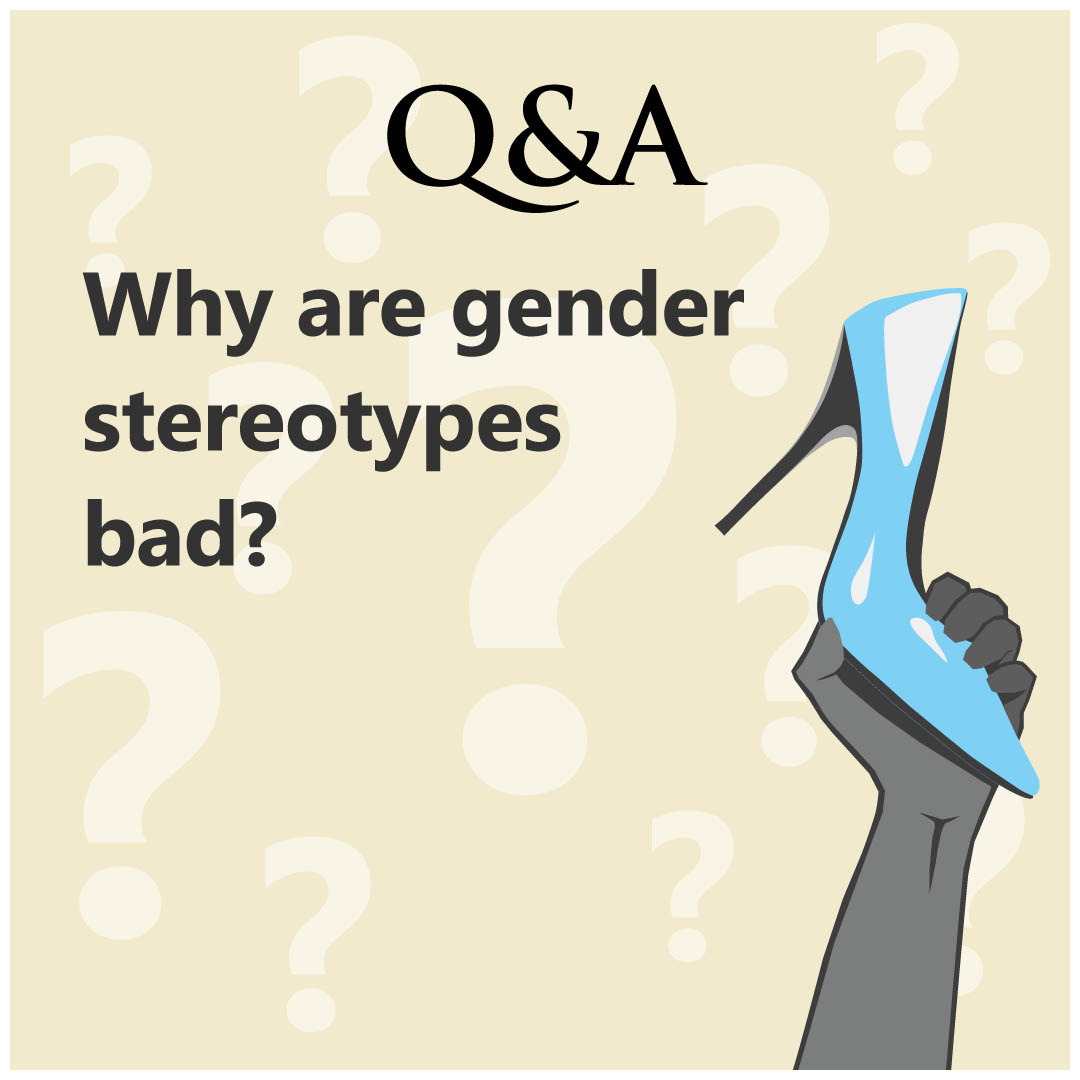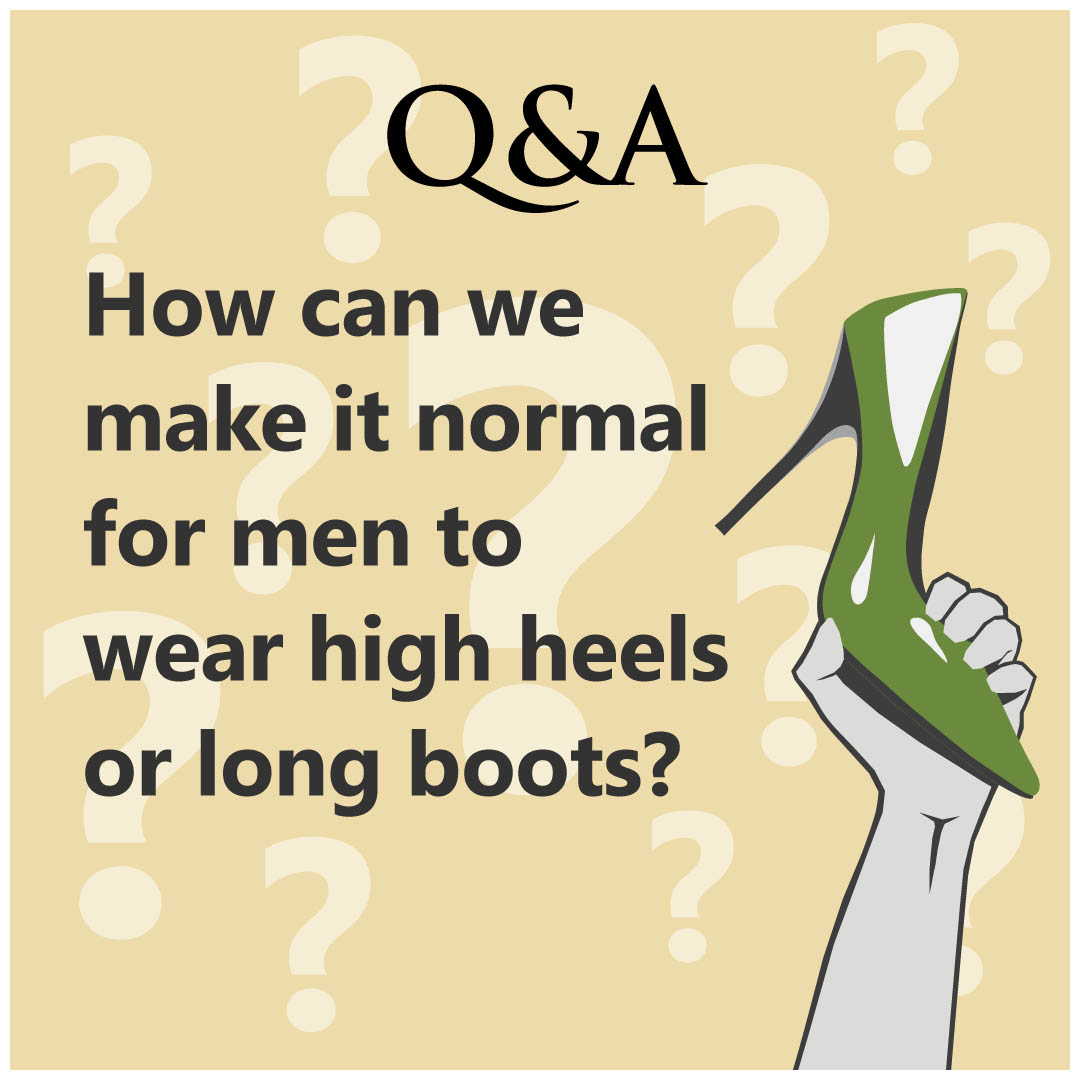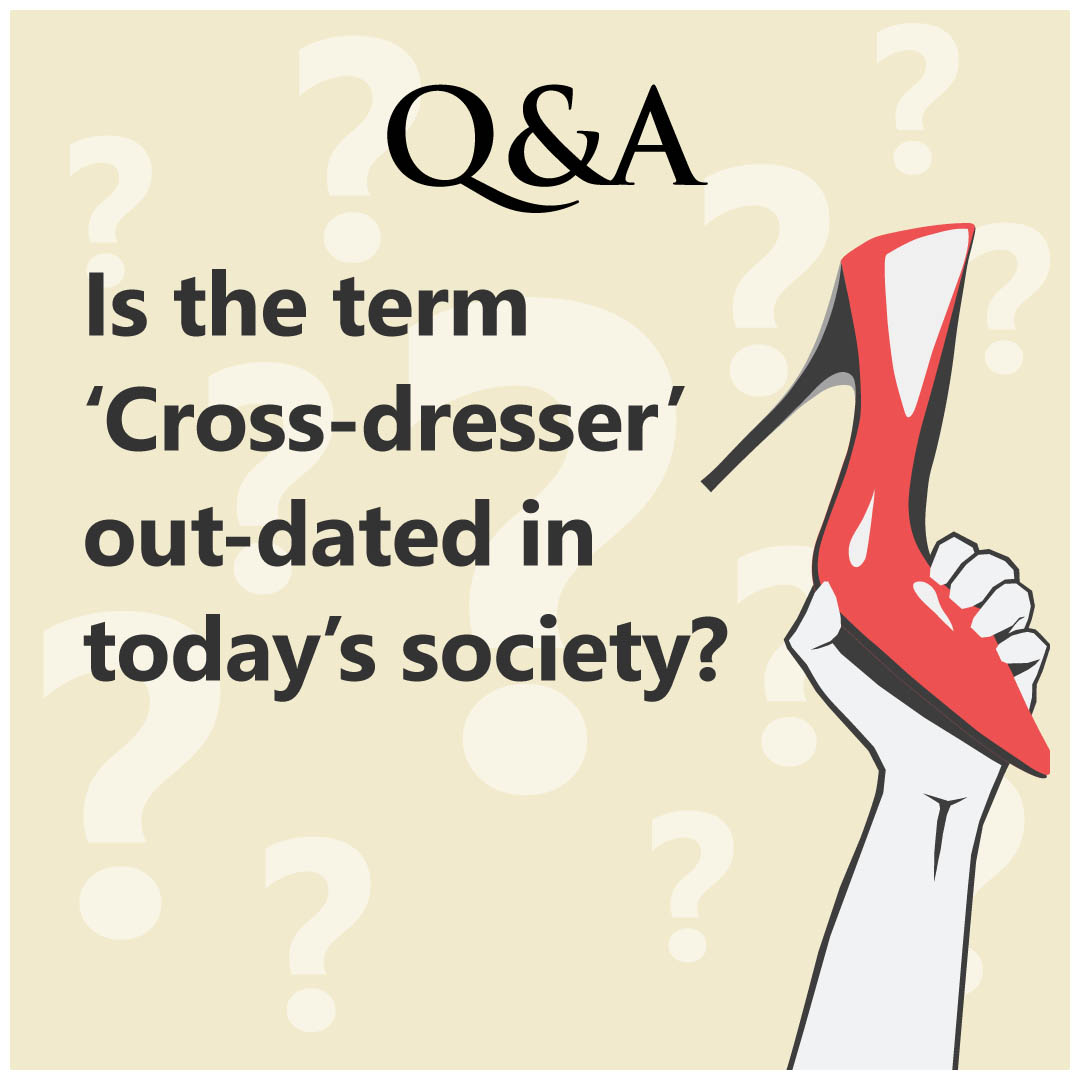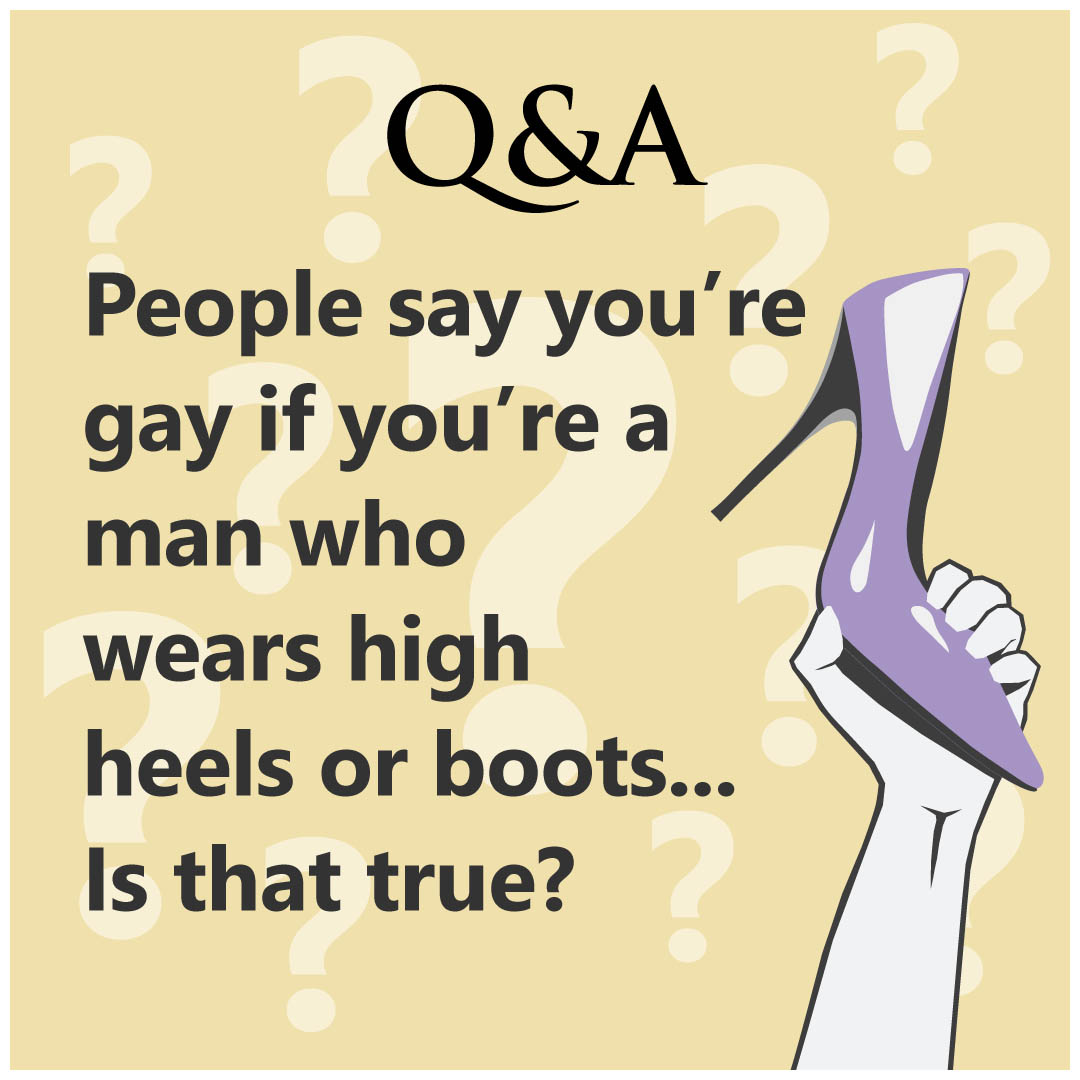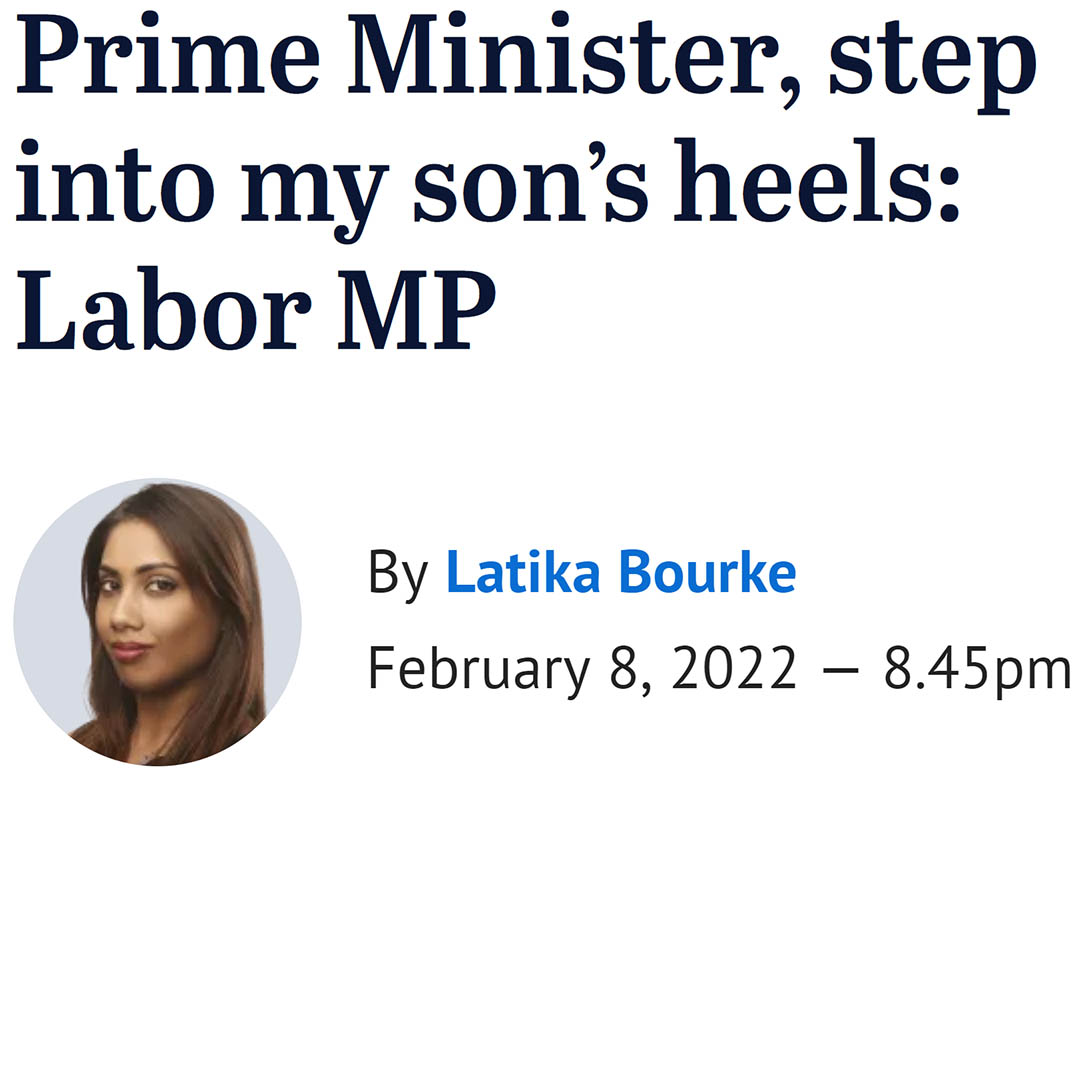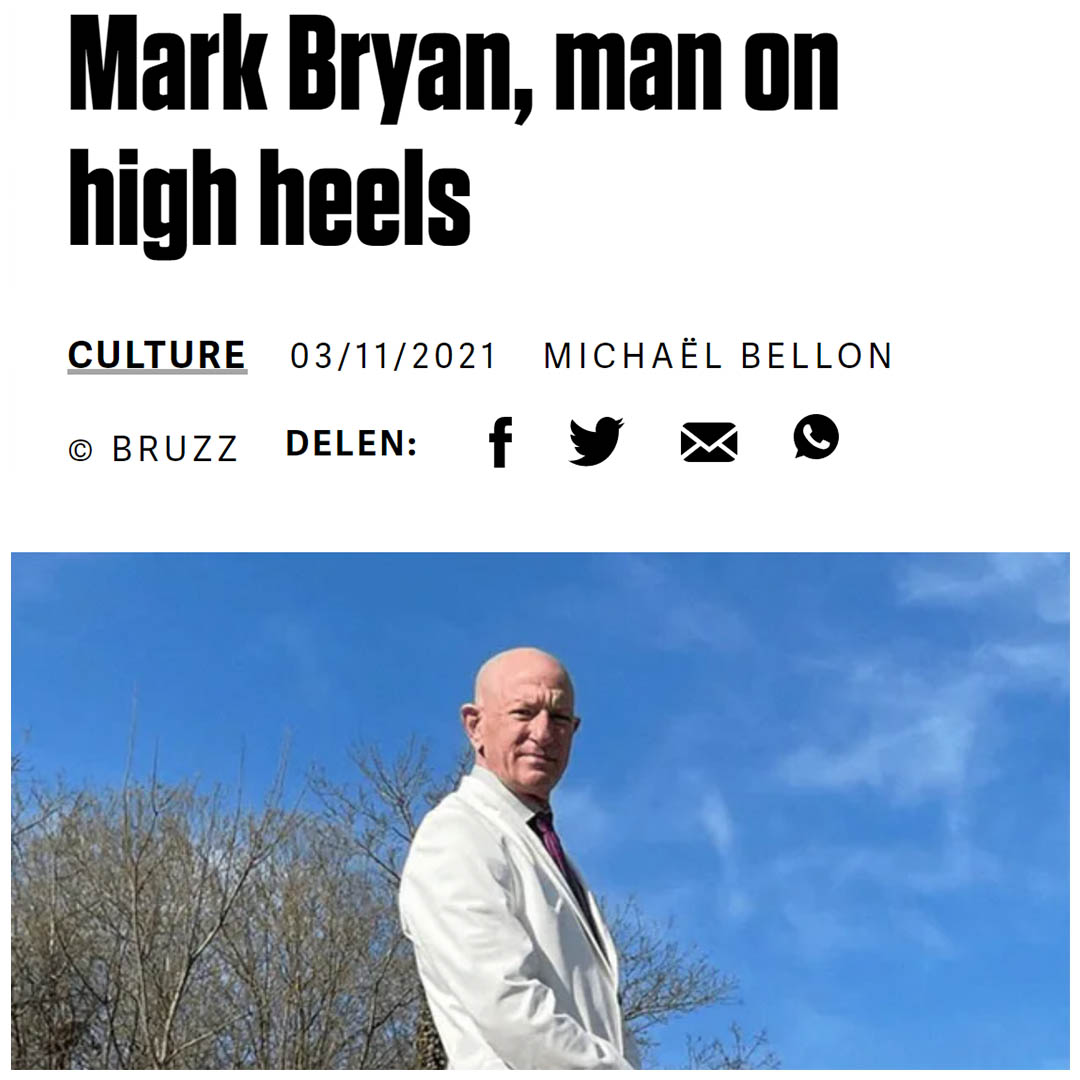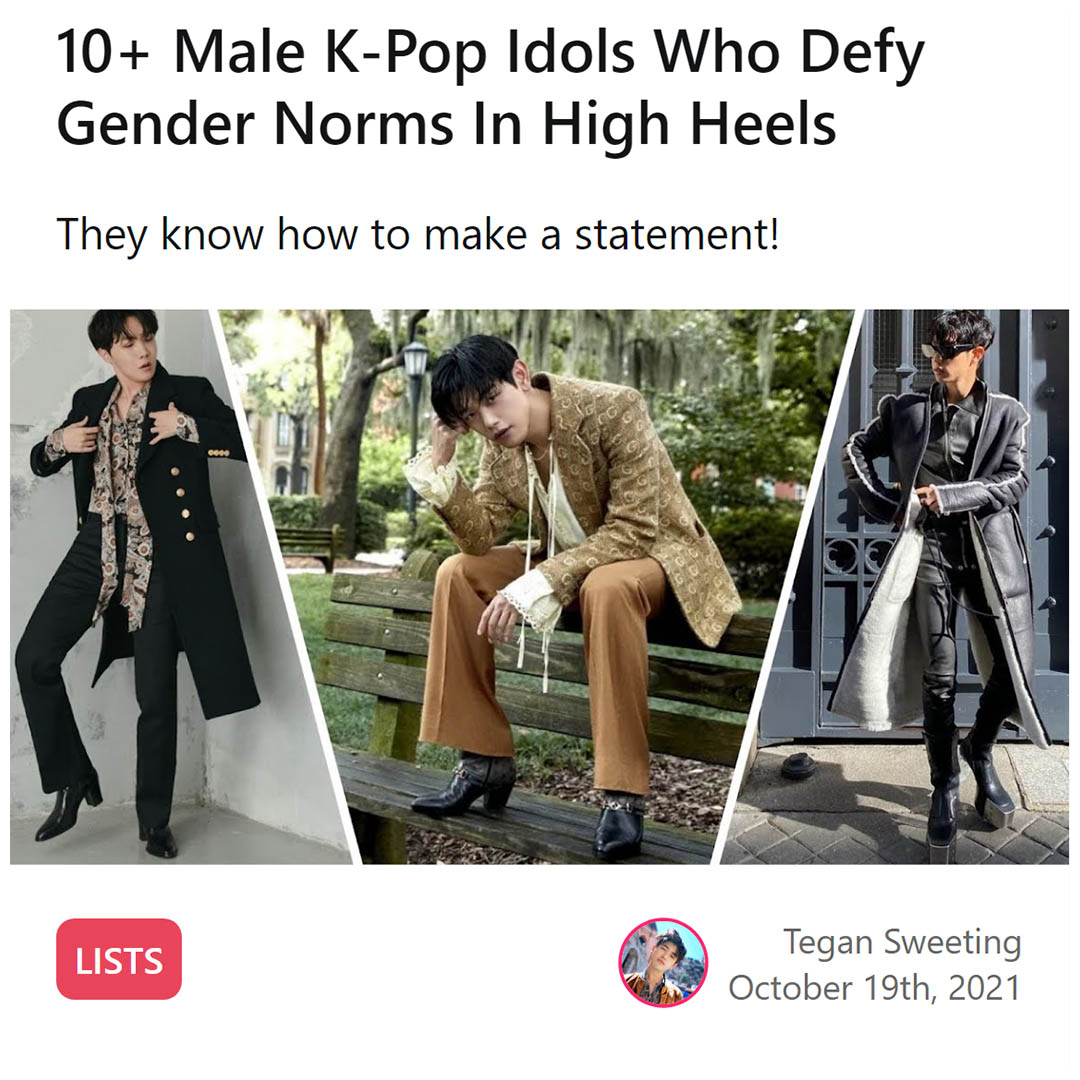Articles tagged with "LGBTQIA"
Why are gender stereotypes bad?
A gender stereotype is defined as an overgeneralisation of characteristics, differences and attributes of a certain group based on their gender. Typically this is most widely understood in the context of the gender binary of men and women. For example, women are often portrayed as being emotional, caring, nurturing and in need of protection. Men are often characterised as being leaders, rational, career driven and strong. However, a gender stereotype is harmful when it limits the group’s capacity to develop their personal abilities, pursue professional careers and/or make choices about their lives.
Other examples are where assertive women are called “bitches” and “whores”, while men who don’t appear or act masculine are called “sissies” or “wimps” or assumed to be gay, which is a very offensive stereotype in the LGBTQIA+ community.
Gender stereotypes are complex and originate from local culture and traditions. Children learn what constitutes female and male behaviour from their family and friends, the media and institutions including schools and religious bodies. Gender stereotypes can have an adverse effect on all genders, as young people find themselves regularly exposed to messages about how boys and girls should look, behave and play. These socially accepted and often unconscious ideas start to form in infancy.
Gender stereotyping results from unconscious biases held by all of us. Unconscious bias happens when our subconscious makes assumptions about people based on their background or perceived background.
Everyone has unconscious biases. An individual can be unconsciously influenced by a stereotype even if they do not rationally subscribe to it. Becoming aware of our biases and working to counter them is an important way to combat the negative effects of gender stereotypes.
Unconscious bias arises because we have to process vast amounts of information every second. In order to avoid being overwhelmed, our brains have to make assumptions based on previous experience and find patterns to speed up decision making.
However, these assumptions tend to be based on simple characterisations of people such as their age, race or gender. They are communicated through micro-messages such as body language and choice of words. This is more likely to happen when we are stressed or tired, and can cause problems by affecting our beliefs and treatment of others.
As our society moves to a broader construct of what “gender” means, individuals who are stuck in this binary idea of gender have a difficult time wrapping their brains around individuals who do not fit into a strict gender dichotomy, or do not identify with any gender at all.
We are easily thrown in terms of our interactions with others for whom our brain has not been programmed to stereotype to some degree. This is because stereotyping enables us to make sense of the world – at least sometimes. Someone who considers themselves “Gender Fluid,” or “Gender non-conforming,” threatens the stereotypes we are familiar with and for that reason can seem is weird and/or threatening because we can’t even stereotype them.
Mainstream media & advertising have a powerful role to play in defining the gender stereotypes that we perceive, so much so that in June 2019 the Advertising Standards Authority (ASA) in the UK banned "gender stereotypes that are likely to cause harm, or serious or widespread offence" following a review.
The ASA said the review had found evidence suggesting that harmful stereotypes could "restrict the choices, aspirations and opportunities of children, young people and adults and these stereotypes can be reinforced by some advertising, which plays a part in unequal gender outcomes".
"Our evidence shows how harmful gender stereotypes in ads can contribute to inequality in society, with costs for all of us. Put simply, we found that some portrayals in ads can, over time, play a part in limiting people's potential," said ASA chief executive Guy Parker.
Media defines culture, and culture defines change. Individuals may see thousands of advertising messages a day in social media, TV, movies, newspapers or magazines. Those messages matter, because they influence our perceptions of gender.
When it comes to the portrayal of men in media, the fact is that harmful stereotypes do exist about what it means to be masculine, focusing on power dynamics, domination of other men, subjugation of women, violence and aggression. When this gender inequality occurs in the background of gender stereotyping, this is in the most basic sense sexism.
We’ve written new scripts for our daughters about strength and leadership, which are slowly starting to gain representation in media, but what about our sons? What do we want to redefine about their future manhood? New definitions can emerge, though they are often in conflict of our understanding of the world through existing stereotypes. The quantity and quality of advertising messages will largely determine how quickly and how well new roles are defined and adopted by men.
We need to stop seeing challenges to rigid gender roles as a threat, and instead question what’s working for us now and what’s no longer working. The truth is that some gender stereotypes can hold both men and women back from being the best that they can be - and impact our mental health.
Take some time to evaluate the gender stereotypes you frequently encounter and ask yourself whether they truly work to elevate your potential equally alongside others or at their expense because of their gender. Are they genuinely a threat to you or are you simply unconsciously obeying gender stereotype programming which you’ve received since you were born?
When we see a gender non-conforming person in our daily life experience, men in heels being only one example, we should recognise not only the privileges we have in our own position, but the background of inequality within which they have risen through with the mental strength and courage to step outside in the face of gender stereotyping. We may judge them for being "weird", within our own limited experience, or we can regard them as a strong, courageous and individual blueprint for new and positive role models.
Posted: 21 December 2022
How can we make it normal for men to wear high heels or long boots?
1. Be visible
The single most effective thing each and every one of us can do is to be visible. The more people see men in heels, the more it will be normalised.
Every time you venture out you have an opportunity to educate more people and give them a different perspective on how they look at men in what they would normally consider women's clothes. Many people are still unaware of gender issues. Some may find it un-settling at first as we're challenging the status quo... Be kind.
2. Socialise your visibility
Being active regularly on social media is helpful in getting our message about men in heels to "cross-over" into mainstream life. YouTube, TikTok, Pinterest, Instagram and Facebook can all be effective and it's often possible to repurpose content created for one platform on another. Learn about hashtags and use them properly - they are vital to getting noticed. Make hashtags relevant to your post and make them unique to each post. Keep your content focused and on-topic, make it predominantly about your style in heels. Creating a new heels-focussed account is often a good idea if you have pictures of your pet/holidays/what you ate for dinner on your account now. Focus drives follower engagement and retention. If you're not getting (and keeping) the followers you want, make sure you're only posting about topics relevant to their interest.
We can all play our part in social media and in addition to going out there and doing it every day, our community needs us to share our shoe collections, our outfits, our public experiences with whatever level of personal expression we feel comfortable with. Being visible, loud and proud on social media is the key to effecting real change. Resist the temptation to make critical comments when your own profile is empty or has very little content - your voice will be heard louder iand more objectively if you can clearly demonstrate that you walk your talk.
3. Blog it!
Creating a blog website to blog about wearing heels and boots will reach a wider audience than Instagram alone. It can also funnel traffic to your other social media accounts.
You'll probably already have a great deal of content from your social media account (your photos etc), all you need is a little narrative to tell a good story and your website will work well in attracting visitors. Regularly promote your blog on social media.
Some great blogs on high heels and boots can be found at:
4. Ally, don't alienate
Support and ally with other minority groups. Align yourself alongside LGBTQIA+, Feminists and anyone actively gender bending and de-gendering fashion.
5. Support the community
Support each other by making positive, constructive comments on social media, cross-posting and promoting other people's posts and profiles. We'll all achieve more, faster by pulling together as a community.
6. Be gender aware
Be alert to gender-labelling of non-gendered items and call people out on it! The less gendered our world becomes, the better it will be for everyone, us heeled shoe wearers included.
7. Know your history
Educate yourself on men's heel history, fashion and gender issues, it will give you more confidence in yourself and help you develop your style.
8. The fine line between fashion & fetish
Be mindful of sexualisation - don't confuse fashion and fetish. If you have a fetish for anything, that is fine, but keep it private and keep it separate from anything fashion related.
Some things that would also be helpful, but are largely out of our control are
Seeing more men in heels in mass-media Movies, TV series, newspapers and magazines and not just because they are wearing heels, but as matter of fact every day fashion. It's time to change-up the narrative from men in heels being there for shits-and-giggles, because frankly that's getting boring.
Older generations appreciating that the norms that they live by are not the norms that WE live by. We're going to break your norms because they don't have the same value to us as they did for you.
Comments from our readers
We had some great comments on this question posted on our Instagram page for previous posts of this Q&A issue, from both men and women...
"I feel the only way to that is to bring back Cuban heels to mainstream men’s fashion like skinny jeans. I hate to be the bearer of bad news but unless we start with mainstream Cuban heels, high heels will have no chance in men’s mainstream fashion."
"Sadly society have stereotypes about this and wants to quietly shame us for this." ...and we say "Thanks, but we say to hell with gender stereotypes! they are just an out-dated product of the patriarchal society that we live in. The shame is on the people who perpetuate them!!"
"Lead by example. I live in a small town, but still wear heels and/or boots - and dresses or skirts - almost every day. And reactions are almost only positive! ❤️ Even the few, that gave me strange looks, in the beginning are now used to it, and see it as a natural thing, that I dress the way I prefer! 🙏"
"Be confident. And be visible. That makes it fit the norm."
"The more men wear them, the more normal it becomes!"
"Same as guys wearing any formerly masculine style that got appropriated by women...guys just have to get out in them as men, even if "looking" feminine. Clothing does not change one's sex."
"You just do it. I make it normal for myself"
"It will take companies to start making more larger sizes. And market, market, market to men too. Just like Birkenstock big buckle sandals. They stop at size 11. They need to at least go up to 16. I would love to get several of them but no size 14. I wear a size 12 in men's. So that's what it's going to take. We can't wear drag heels and boots all the time. 'Even though I love them' 🙂"
"Normal is majority... more the merrier scenario. Acceptance will return if retail label some high heels as MEN'S. It will take the major retailers to sell them and then the men with the balls to wear them. It will become normal again. If the mullet haircut can return... anything is possible if enough embrace the trend and the trend is marketed"
"As far as I’m concerned it already is, I do it and I consider myself to be normal lol 😂"
"Honestly try to avoid anger when people make comments or laugh. We have to stand tall shoulders back and be proud. No matter what and where your background is."
"You never will, what is normal to one person will not be to the next. You just have to do what feels right for you and if it doesn't please some people that's their problem and if they get over it then that's up to them. You can't truly define normal."
"The behaviour and style of the mainstream is the 'normal'. But minority groups with a goal have the chance for change something. For example women in trousers. For men in skirts, heels, leggings or anything else of female clothing it's the same. We have the right to wear it and we can do. Without Instagram or other platforms in the web, every man in 'wrong' clothes was the only person who do this. With the visibility in the web, every man can see there are any other man doing the same. And the mainstream also see that there more men doing this. And while these men doing and connecting, the trend hunter of the big companies seeing it too. For an example, three years ago ASOS didn't sell swim thongs for men. Actually the do and not only normal thongs, tie side thongs and bikinis for men. Buy what you want, wear what you want with confidence and write reviews at the retailer websites. If the companies see the communication from the customer, they think about developing and offer products for men. ASOS started to sell their shoes in the women department in bigger sizes. They well spotted the trend. It's a crosslinked evolutions starting with our steps which need a little bit self-confidence: 1. Buy the item, with the mindset "it's normal what I'm doing here." 2. Wear/use the item with the mindset "It's normal what I'm doing here." 3. React to weird views or dumb comments/question with the attitude and mindset "I really don't understand you because it's normal what I'm doing here." 4. Ask the employees in the store for assistance when you need and act normal when trying on with the attitude/mindset "It's normal what I'm doing here, so why should I not or should I hide." Sounds easier than it is, but it works and brings you in a positive mood/vibes. Let us start it."
Posted: 7 December 2022
Is the term ‘Cross-dresser’ out-dated in today’s society?
Before we can answer that question, some definitions may be useful.
Cross-dressing: is the act of wearing items of clothing not commonly associated with one's sex. Cross-dressing has been used for purposes of disguise, comfort, comedy, and self-expression in modern times and throughout history.
Almost every human society throughout history has had expected norms for each gender relating to style, colour, or type of clothing they are expected to wear, and likewise most societies have had a set of guidelines, views or even laws defining what type of clothing is appropriate for each gender.
The term "cross-dressing" refers to an action or a behaviour, without attributing or implying any specific causes or motives for that behaviour. Cross-dressing is not synonymous with being transgender.
Another term for cross-dressing is Transvestitism. Someone who engages in Cross-dressing/Transvestitism is called a Cross-dresser(CD)/Transvestite(TV), although the term Transvestite is now commonly considered outdated and disrespectful. The term Transvestite (often shortened to the slang term "Tranny") was historically used as a slur against people who wore clothes of the opposite sex. Cross-dresser is now a much more accepted term. Cross-dresser was coined by the transgender community.
MtF and FtM Cross-dresser: A man who dresses in women's clothing is a male to female (MtF) cross-dresser. a woman who dressing in men's clothing is a female to male (FtM) cross-dresser. For women, the term is seldom used and the wearing of trousers/pants/men's shirts is often discounted as cross-dressing. This is because in our current society, male clothing is often considered gender-neutral. Therefore when someone uses the term "cross-dresser", the focus shifts mainly towards a MtF cross-dresser.
With those definitions made, two additional points are important to recognise:
a). Cross-dressing as it relates to Transgender: Wearing clothes intended for the opposite sex does not mean that the person identifies as the opposite sex. It is different from being Transgender or Transsexual. When transgender people dress according to their gender identity it is not necessarily the same as cross-dressing.
It is important to know that a cross-dresser does not necessarily have body or gender dysphoria (gender dysphoria means feeling uncomfortable with their body and gender they were born with), they are perfectly happy with their gender assigned at birth and have no desire to change their sex, but simply enjoy being able to cross-dress from time to time. However, Transgender describes people who feel that their gender identity is different from their biological sex.
Most transgender people do not appreciate being called cross-dressers, and for good reason. As they are wearing clothes of their own gender identity they consider themselves, and should be considered by others as the gender they are dressing in. A Transgender woman wearing women's clothes is not a cross-dresser, nor is she a drag queen. She is just a woman. Similarly, a Transgender man, wearing men's clothes is not a cross-dresser, nor is he a drag king. He is just a man.
b). Cross-dressing as it relates to Drag: A cross-dresser should not be confused with drag queens/kings. Drag is a special form of performance art based on the act of cross-dressing. Drag queens are usually male performance artists who dress in female character. Drag Kings are mostly female performance artists who dress in male character.
Now, to get down to answering the question...
As gender refers to the socially constructed roles, behaviours, expressions and identities of girls, women, boys, men, and gender diverse people we can deconstruct that concept. While the term Cross-dresser works well for some people, as it has for years, for many others they do not feel that it works well for them. For non-binary or agender people (who don't identify with the gender binary of male & female) who want to wear certain clothes as part of their gender expression, feel that the term is obstructive and often offensive towards them. With the realisation that clothes have no gender, a skirt or a pair of trousers are essentially just coloured and textured fabric cut and sewn into a garment. The clothes know nothing of gender other than that assigned to them by their creator. The same, of course applies to shoes - high heels are not women's shoes... they are just high heels.
A growing number of people believe that today's socially constructed gender stereotypes don't serve us well in enabling fully inclusive gender expression that recognises our diversity. With the central fact that gender is a social construct, gender labelling of clothing is also a therefore also social construct and can equally be challenged and deconstructed. Gender labelling of clothing perpetuates the construct, but in more recent years this is slowly changing with manufacturers and retailers removing, or neutralising gender labelling on clothes and on signage in stores.
Manufacturers and retailers, now too numerous to mention, are also making items of clothing more traditionally intended for a single sex for both sexes, while recognising that the key differentiator is not actually our biological sex, but our body shape. Does the term cross-dresser still stand up when the clothes have no gender labels? Maybe not.
All clothing, of whatever shape, colour, texture or style has been worn by both sexes as normal daily wear at some point in history, so why do we have gendered clothing now? Visual communication is one of the many reasons we dress the way we do. Our gender identity is expressed visually through what we wear, as can be our social status or rank within an organisation. Sometimes our visual appearance, what we wear, make-up, hairstyle, skin colour, whether rightly or wrongly, can trigger others around us through our learned and often habituated social conditioning to make a judgement on how they should interact with us. Aside from organisational ranking, we should not treat people differently because of their appearance. Everyone is born equal and should be treated as such. Does what they wear really matter more than their actions and achievements as a person?
In conclusion, the term Cross-dresser is fine for a socially constructed world in which there is a gender binary, but it does not work well in a non-binary world where gender is expressed on a spectrum and where many believe that clothing has no gender to start with. When it comes to the use of the term today, if the logic used to describe a man in "women's" clothes as a crossdresser does not hold when applied to a woman wearing "men's" clothes - it's not logic, it's sexism.
When clothing has no gender there are no lines to "cross", hence no cross-dressing and why we therefore believe that the term cross-dresser is out-dated and should decline in use.
Posted: 27 July 2022
People say you’re gay if you’re a man who wears high heels or boots... Is that true?
It may be true that people say that, but it’s certainly not true that any item of clothing or footwear can ever change your sexuality when you put it on. To even suggest that is ridiculous.
In talking to various people during my research for this answer it was by no means conclusive that gay men are more likely than anyone else to wear heels and boots. They don’t need anyone’s judgement any more than anyone of any other sexual orientation, straight, bi or otherwise who want to express themselves with their clothing choices, but one thing is certain it’s not clothes that determine any person’s sexual orientation.
Deconstructing gender stereotypes is the key to changing this situation. There are many on Instagram who are behind that movement and call it out. We all need to play a part if we want to freely express ourselves. Raising awareness via Instagram other social media and blogs will help, but we also need open and honest conversations with the people around us. While we may be comfortable, familiar and accepting of the notion that clothes have no gender and don’t dictate your sexual orientation, to most people that will be a new concept, so perhaps it's time for a coffee and a chat...
Thank you again to everyone who contacted me with their perspectives on this topic during my research. Much appreciated.
Comments from our readers
We had some great comments on this question posted on our Instagram page for previous posts of this Q&A issue...
"No, you’re a person who just happens to like them. Nothing about being gay or straight etc. Do women who dress like a man get called gay"
"As a pre op transgender wearing heels comes naturally to me, even driving in 3 inch block heels no problem"
"After all it is simply an item of clothing. And when you go back and look at the history of boots particularly over the knee boots and thigh high boots they were originally designed hundreds of years ago for men all of this stereotyping people has got to stop gender neutral fashions should be everywhere and we should just be allowed to wear what we want wearing a pair of boots that are marketed for women is not a sign of being gay it’s just a freedom of your own expression. I seriously wish all boot Manufacturers would start marketing to men there are so many of us out there they enjoy the pleasure of wearing a pair of boots design for women and are afraid to come out there is no reason to be afraid times are changing but they need to change quicker."
"Speaking as a heterosexual happily married man who has enjoyed a lifelong passion for wearing women’s boots primarily low heeled or up to an inch and a half out in public for many, many years under my jeans. I do not agree that you are a gay man who wears them. I simply feel complete and comfortable wearing boots over normal shoes but that does not make me gay at all I have no desire to make love to someone of the same sex. I am not against that. I believe everybody should have the right to live their life really and express themselves as long as they are not hurting anyone. You’re absolutely right the time has come to do away with a stereotype labels put on people."
"Only a few gay guys appreciate high heels. They even often hate them because it’s woman related."
"Of course everyone is free to wear whatever they like, and should! Speaking purely from my experience, I’d say it is more common to find straight guys who are into traditionally feminine shoes like high heels. Gay guys are often into traditionally masculine boots like motorcycle or combat boots. In other words, if you are attracted to women you like women’s shoes and if you are attracted to men you will prefer men’s shoes. So perhaps which kind of footwear one likes does have something to do with sexual orientation—just not in the way many people think."
Posted: 15 July 2022
The Sydney Morning Herald reports on the speech made by Australian Labor MP Stephen Jones to Parliament during the debate on the proposed Religious Discrimination Bill.
Mr Jones talked about his Son's gender identity and revealed the grief that his family had borne from the suicide of his gay nephew. He implored the Prime Minister to see things from another point of view by putting himself into his son's heels.
This is an important story, which we will come back to again for more reports, as it highlights the front-line in creating legislation which removes discrimination and provides support for people who want to live their lives authentically and without compromise.
Original URL: https://www.smh.com.au/politics/federal/prime-minister-step-into-my-son-s-heels-labor-mp-20220208-p59uv0.html
Posted: 27 June 2022
ABC News reports in Australia on the debate for the Religious Discrimination Bill where Stephen Jones MP delivered an emotional speech in parliament highlighting the struggles the LGBTQIA community they face every day, highlighting in particular his own son Paddy, who frequently wears gender non-conforming clothes, including high heels.
Original URL: https://www.abc.net.au/news/2022-02-10/paddy-stephen-jones-son-speech/100819064
Posted: 12 June 2022
Bruzz interviews Mark Bryan.
“Most people assume that clothes say something about their sexual orientation, and they don’t want to put a label on them that doesn’t fit them.”
“The battle will only have been won when people stop seeing a skirt as uniquely feminine”
Original URL: https://www.bruzz.be/en/culture/culture/mark-bryan-man-high-heels-2021-11-03
Posted: 26 March 2022
Koreaboo gives the run-down on the top male artists in K-Pop who love to wear heels.
Featuring:
GOT7
- Mark Tuan - @MarkTuan
- Jackson Wang - @jacksonwang852g7
BTS
- V - @thv
- J-Hope - @uarmyhope
- Jimin - @j.m
SHINee
- Taemin - @lm_____ltm
- Key - @bumkeyk
- Jonghyun - @jonghyun.948
Eric Nam
N.O.M.
- @n.o.m_official
- B-SIDE - @n.o.m_b_side
- J.K. - @j.k_what
- KOM - @n.o.m_kom
Teen Top
NCT
The Boyz
- Juyeon - @magijuyeon
EXO
- Kai - @zkdlin
2AM
- Jo Kwon - @kwon_jo
Mentioned in the article are the video for "I Need U"...
- BTS - I Need U
and the feature on BTS in Esquire
Original URL: https://www.koreaboo.com/lists/male-kpop-idols-defy-gender-norms-high-heels/
Posted: 25 January 2022
